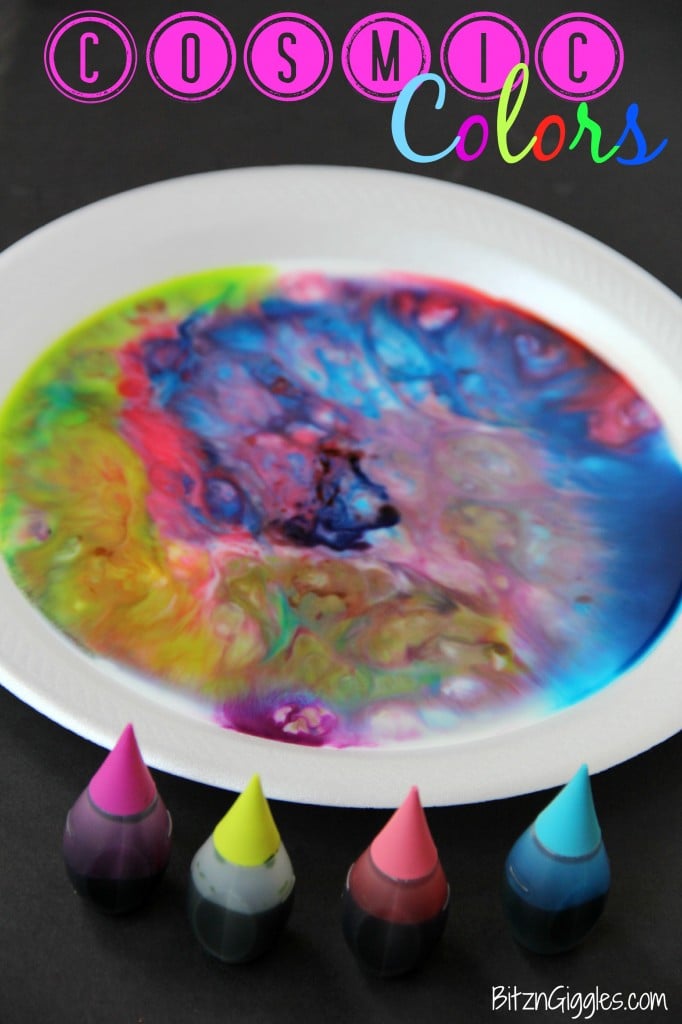
Want to Save This Recipe?
We attended Josh's grandparents' anniversary party the other day and as we stepped out of the car, his aunt came down the driveway to greet us. It wasn't a "hello" or "glad you could make it," it was, "I saw something really cool on-line the other day and thought of you!"
Since I've started blogging I've had lots of family and friends approach with with projects and ideas they saw on-line or have made on their own. I love new ideas, and if they come from my friends and family (the ones who have supported me from the very beginning), I'm more than willing to lend an ear. When Krista approached me that day it brought a big smile to my face and an appreciation for those who follow my blog.
I have to admit that most of the ideas I've heard of or seen before because of all of the time I spend on-line and on social media, but this one, for some reason, I had never come across. I promised Josh's aunt I would look into it and if I tried it and posted about it, she would be the first to know. So, Krista, I'm calling this project/experiment, "Cosmic Colors" and I'm dedicating it to you!
It's also the perfect 4th of July activity for kids. It's kind of like liquid fireworks! Well . . .kind of. You have to see it for yourself!
Here's what you need to do this amazing project:
Materials
- Paper plate
- Food coloring
- ¼ cup whole milk (or enough to fill your plate)
- Dish soap (I used Dawn)
- Cotton swab
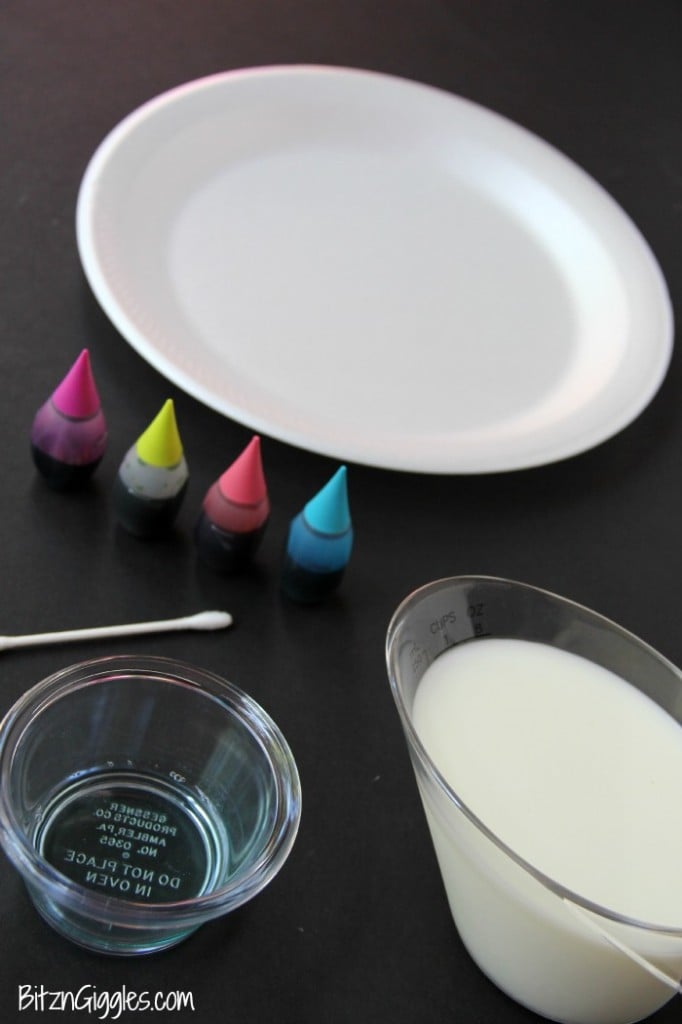
You'll want to:
- Fill your paper plate with the milk.
- Add about 3-4 drops of food coloring in little circles around the plate.
- I made 4 circles each with a different color of food coloring.
- Dip your cotton swab in the dish soap.
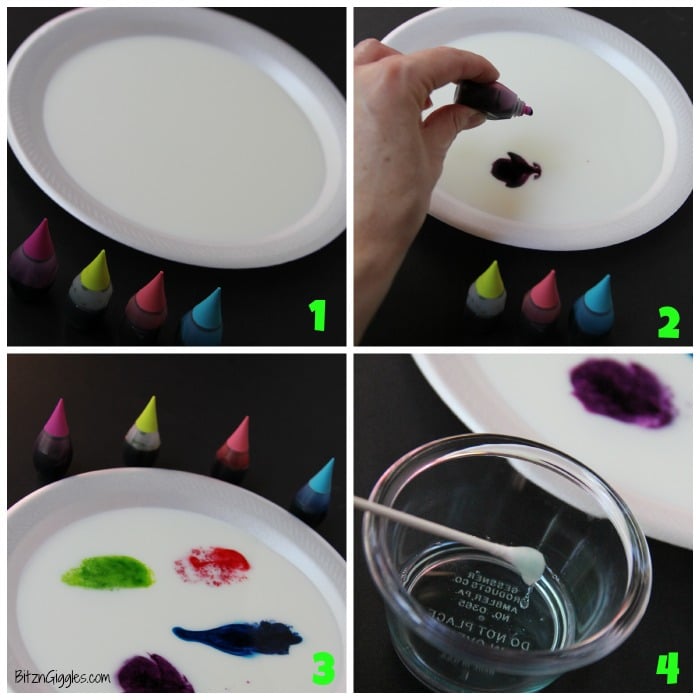
This is where the fun begins! I've always loved science experiments as a kid, and now my 5-year-old son does, too. Yeah! More fun for me in my adult years! If your kids go crazy over science, this is where you call them into the room (that is, if they're not helping you already). Get your swab positioned in the middle of the plate above the colors.
And just as an FYI, I was doing this project myself the day of the photo shoot, so I was holding my swab in one hand and my camera in the other. Not the ideal scenario, but I did it for you. . .and Krista. 🙂
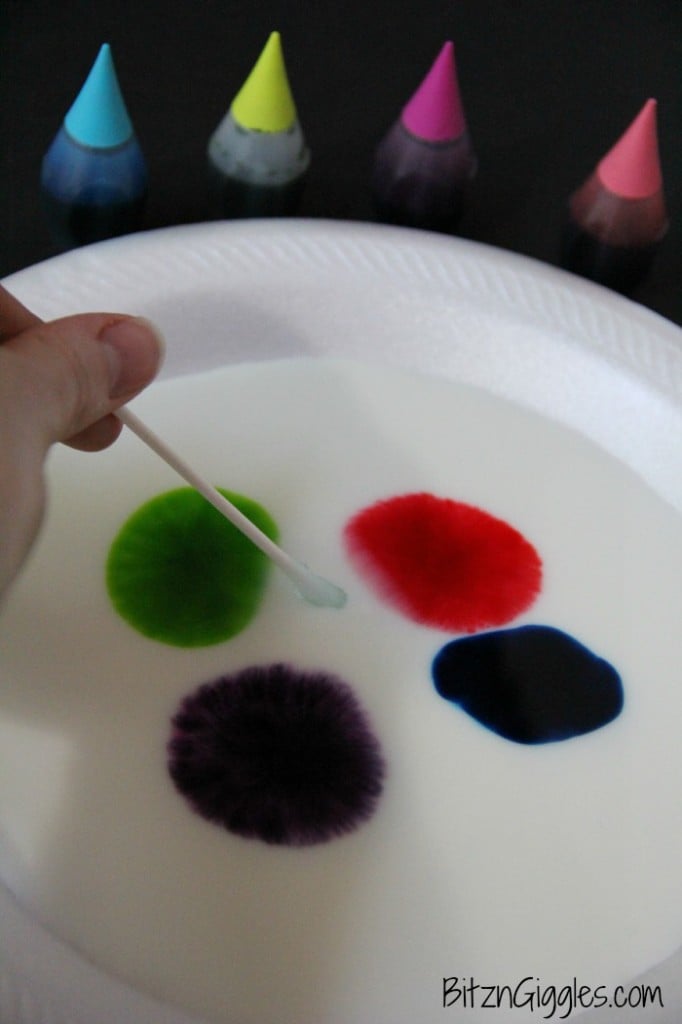
Now, place the dish soap-filled swab into the milk and watch the colors start to swirl.
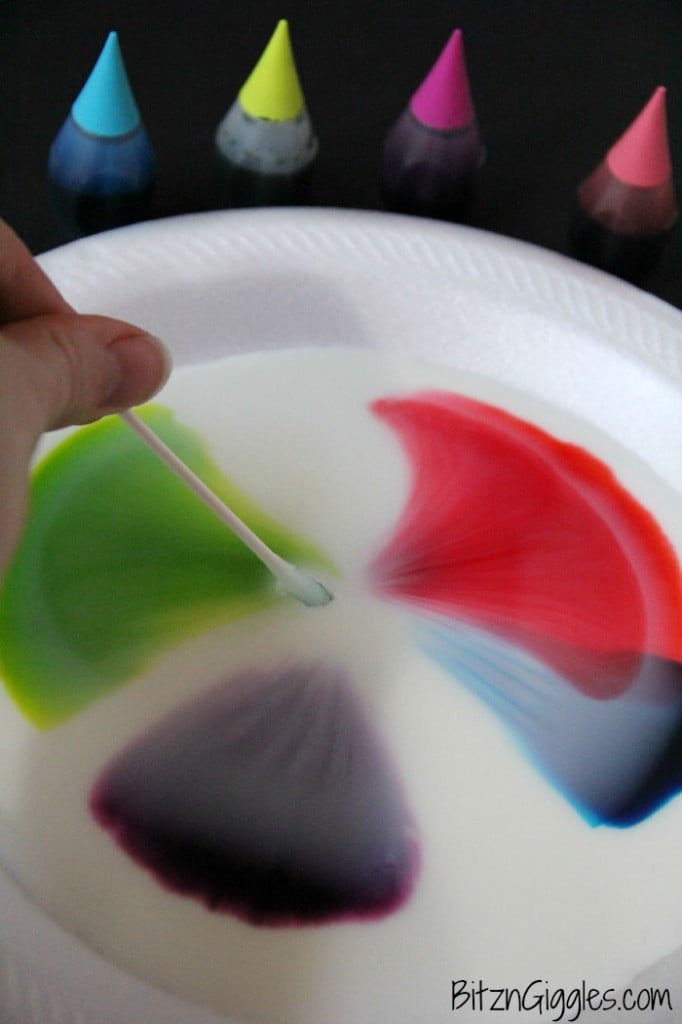
According to Steve Spangler Science, milk is mostly water, but it also contains vitamins, proteins, minerals and tiny droplets of fat that are suspended in the solution. The dish soap lowers the surface tension of the liquid and reacts with the proteins, altering the shape of those molecules and setting them into motion, kind of like how dish soap helps to lift the grease off of dirty dishes.
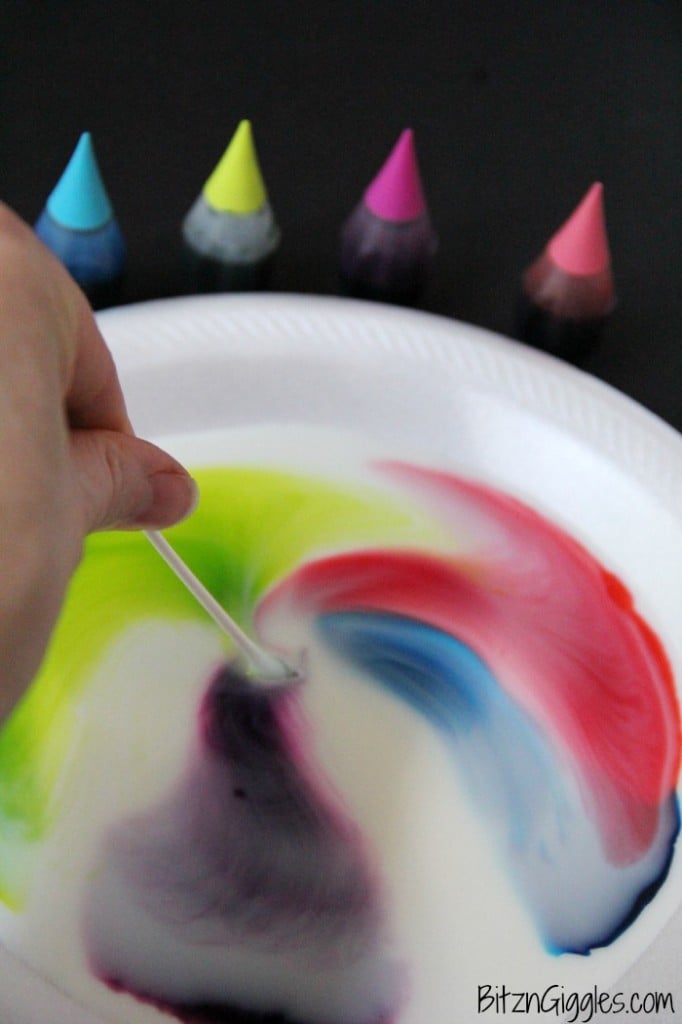
As the soap becomes equally mixed with the milk, the swirling of colors slows down and eventually ceases - but only AFTER quite a few seconds of wonderful fun!
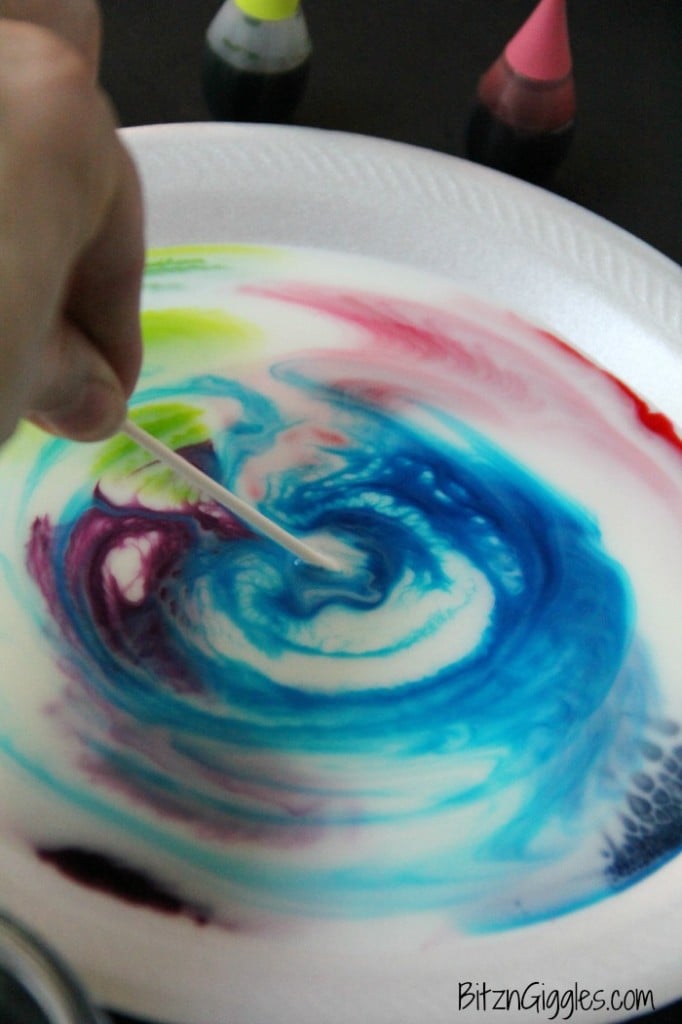
Almost every household in America should have what they need to try this project RIGHT NOW! So, what are you waiting for? Grab your kids and get to it! YOU WILL BE AMAZED!
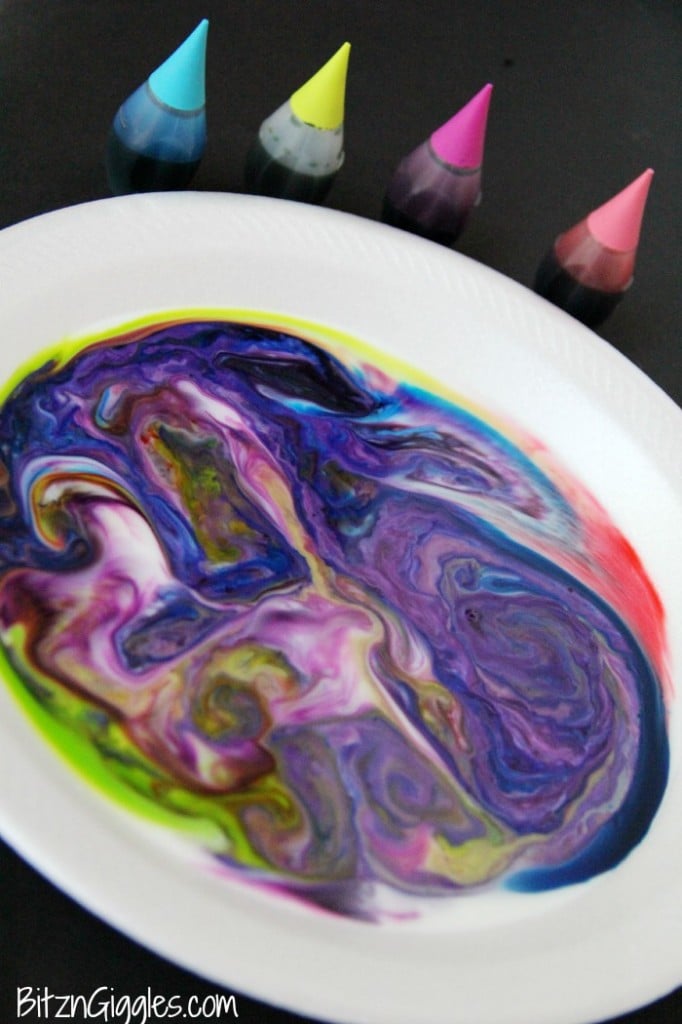
Cosmic Colors
Materials
- Paper plate
- Food coloring
- ¼ cup whole milk
- Dish soap
- Cotton swab
Instructions
- Fill your paper plate with the milk.
- Add about 3-4 drops of food coloring in little circles around the plate.
- I made 4 circles each with a different color of food coloring.
- Dip your cotton swab in the dish soap.
- Now, place the dish soap-filled swab into the milk and watch the colors start to swirl.
Notes
- Use Whole Milk for Best Results: Whole milk works best for creating vibrant cosmic colors due to its higher fat content. The fat molecules in the milk interact with the dish soap, causing the colors to swirl and create mesmerizing patterns. Avoid using skim or low-fat milk, as they may not produce as vivid results.
- Experiment with Food Coloring Placement: Get creative with the placement of food coloring on the paper plate. Try arranging the drops in different patterns or designs to achieve unique effects when the dish soap is added. You can create concentric circles, random splatters, or even spell out initials or shapes with the food coloring drops for added visual interest.
- Controlled Swirling Technique: Dip the cotton swab into the dish soap and gently touch it to the surface of the milk where the food coloring drops are located. Avoid stirring or agitating the milk excessively, as this can cause the colors to blend too quickly and result in muddy hues. Instead, lightly touch the swab to the milk and observe the mesmerizing swirls and patterns that form as the dish soap reacts with the fat molecules in the milk.

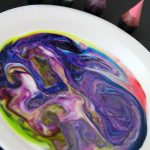
Julia
Do you know of a good alternative to milk? I'd love to try this, but have to work around dairy allergies 🙂 thanks!
Sara
Julia, I'm really not sure there is an alternative to milk. It's the fats within the whole milk that make the experiment work.
evangelin
Could you let it dry and hang it??????
Sara
Hmmm. . .I'm not sure how that would turn out. I've never tried it.
Laura (Lauras Little House Tips)
Very creative. Thank you for linking up to the My Favorite Things Link Party. We are glad to have you.